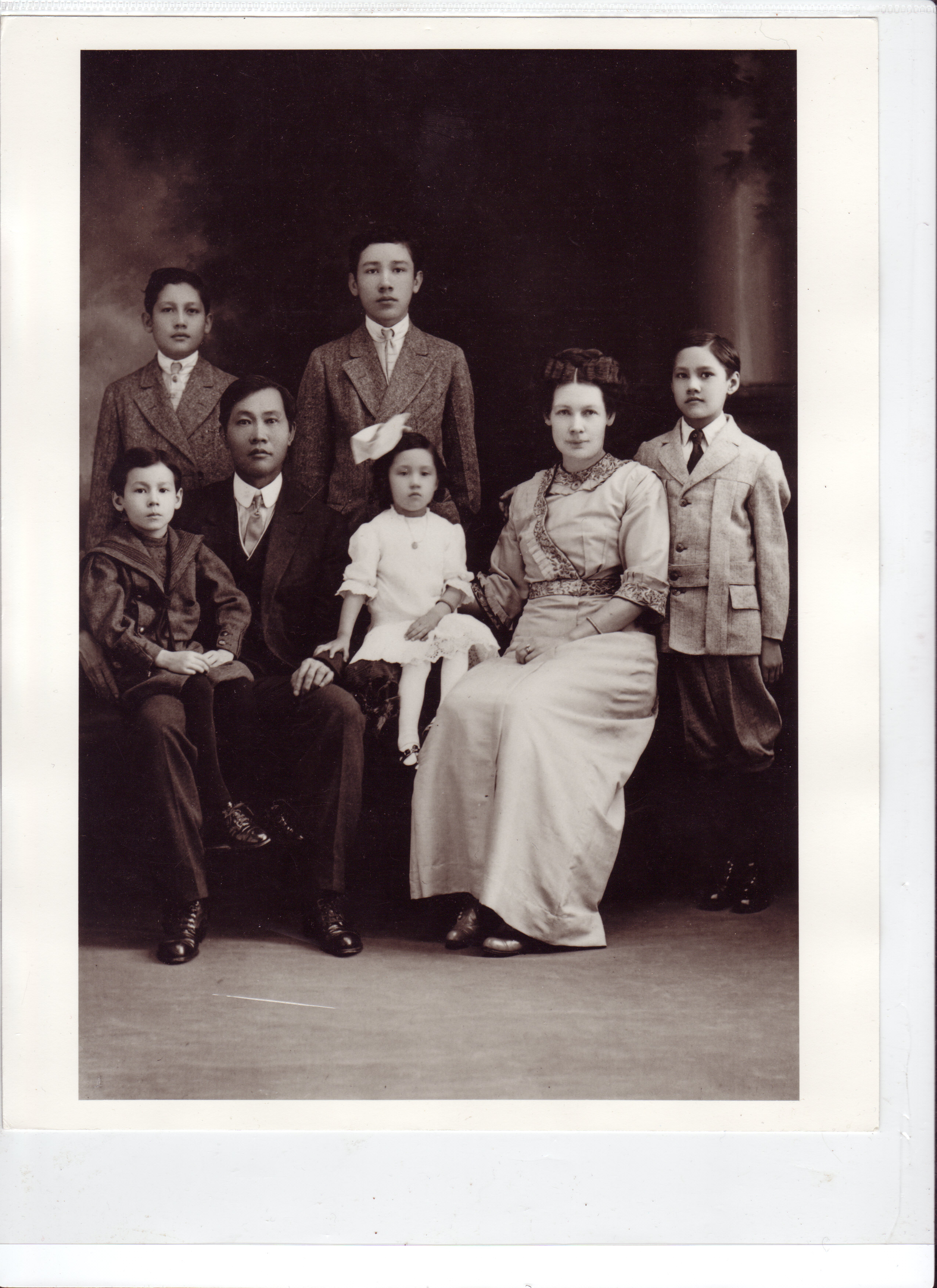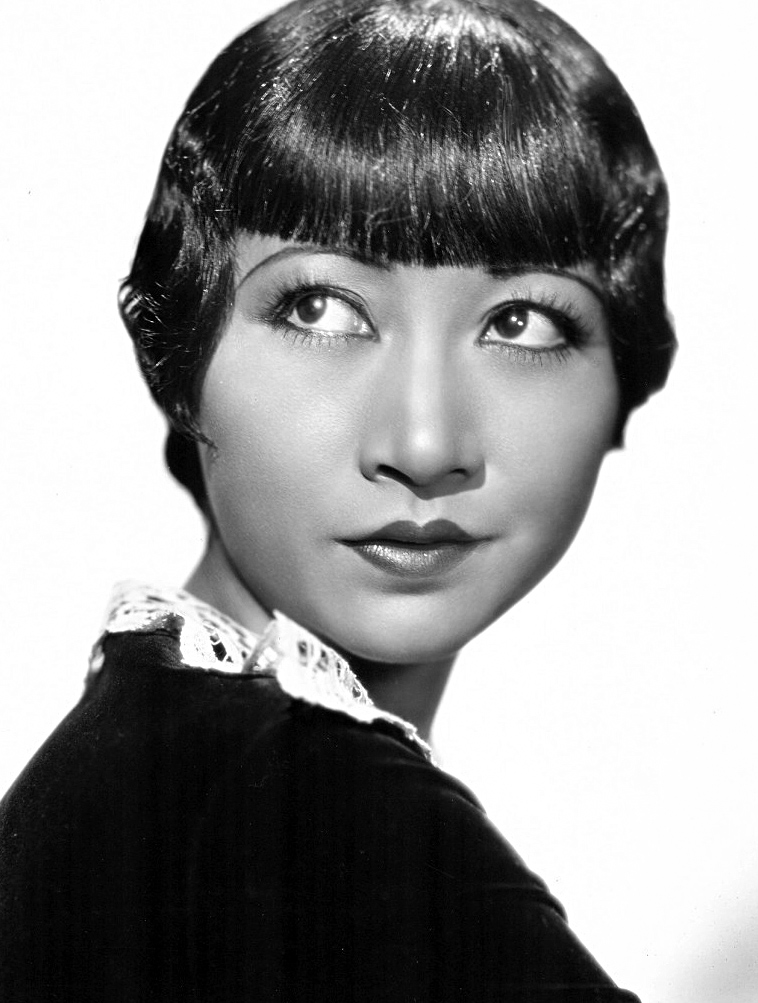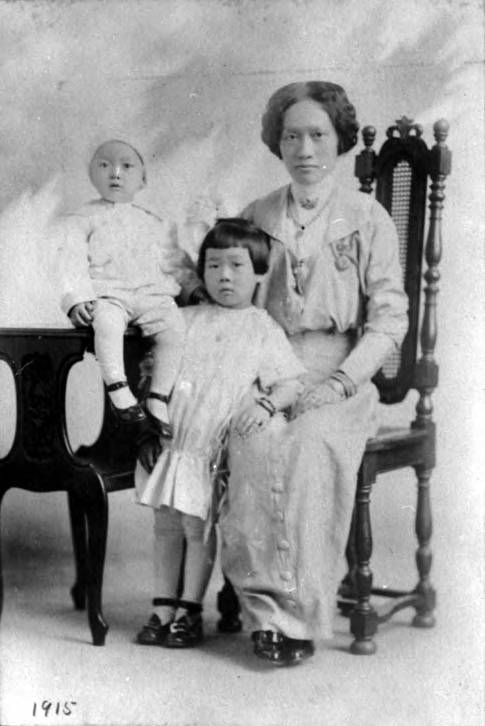Immigrant Rights: Chinese in Early California - Chinatown
Introduction
In the 19th century, China, then in the last years of Qing Dynasty (1636-1912), faced serious internal strife. The century began with the Opium Wars against Britain that destabilized the Pearl River region and then, from 1861 to 1908, the much-ridiculed Empress Dowager Cixi held the throne. In the north, the Nian Rebellion raged, and in the south the Taiping Rebellion was the largest conflict since the Manchu War in 1644. Many rural Chinese, particularly in Guangdong province, blessed with easy access to a trans-Pacific port, looked to travel to the United States, called “Gold Mountain” or Gum San.
Chinese immigration began in 1815 with a handful of Chinese men off maritime trade ships, while the first woman, Afong Moy, arrived in 1834 as a marketing ploy for Chinese goods. The California Gold Rush in 1849, coupled with recruitment efforts to build the Central Pacific Railroad in 1865, encouraged more Chinese “sojourners” to emigrate to the west coast of the United States with plans to return to China with increased wealth. While some did succeed, many died in America; only their bones survived to be reinterred in their ancestral homeland.
By 1870, the American reaction to the presence of 64,199 Chinese laborers included a surge of nativism and xenophobia. Initially, laws like the Foreign Miners’ Tax (1850) were levied on all immigrants, but the 1873 Panic encouraged more focused laws, including the 1883 Chinese Exclusion Act, which restricted immigration and would be refurbished for decades. By 1880 the gender imbalance in California favored Chinese men 21-1. In Los Angeles, women comprised only a small percentage of the Chinese, with 2,455 men but only 147 women.
Fong See
 Fong See, patriarch of one of the oldest Chinese families in Los Angeles, was born in August 1857 in Dimtao, China. His father – Fong Dun Shung – was an herbalist by trade who has hired by the Central Pacific Railroad company to tend to Chinese workers in California. The Central Pacific Railroad company was commissioned by the United States Government to complete the western portion of the First Transcontinental Railroad, which was eventually united with the Union Pacific Railroad company’s eastern portion in Utah in 1869. Shung arrived in San Francisco, California in 1867, amid a widespread wave of racial violence between the majority White American population and the increasing numbers of Chinese immigrant workers. With the railroad nearing completion and available jobs in California rapidly depleting, the Chinese immigrants, who lacked the legal protections White Americans and other ethnic minorities had, found themselves the targets of harassment, violence, and outright killing throughout 1871, one of the most brutal years of racial violence in 19th century America.
Fong See, patriarch of one of the oldest Chinese families in Los Angeles, was born in August 1857 in Dimtao, China. His father – Fong Dun Shung – was an herbalist by trade who has hired by the Central Pacific Railroad company to tend to Chinese workers in California. The Central Pacific Railroad company was commissioned by the United States Government to complete the western portion of the First Transcontinental Railroad, which was eventually united with the Union Pacific Railroad company’s eastern portion in Utah in 1869. Shung arrived in San Francisco, California in 1867, amid a widespread wave of racial violence between the majority White American population and the increasing numbers of Chinese immigrant workers. With the railroad nearing completion and available jobs in California rapidly depleting, the Chinese immigrants, who lacked the legal protections White Americans and other ethnic minorities had, found themselves the targets of harassment, violence, and outright killing throughout 1871, one of the most brutal years of racial violence in 19th century America.
In that same year, Fong See left China to find his father in California, eventually reuniting with him in Sacramento. After his service to the Central Pacific Railroad was completed, Shung had been operating an herbal emporium – Kwong Tsui Chang – for a few years, catering to the Chinese community with medicines and fragrances. While Shung wanted to go home to China, Fong See wanted to stay, and the two agreed that the latter would be put in charge of the business. In 1874, See applied for a business permit to operate in Sacramento and renamed the store to “The Curiosity Bazaar,” shifting from the sale of herbs and plants to “risqué” ladies’ undergarments. Years later in 1894, an eighteen-year-old runaway from Oregon named Lettice Pruett was hired by See to work for her business. Reluctant at first, See observed Pruett’s skills in customer relations, business skills, and friendly and accepting approach to her customers and Chinese co-workers. Pruett proved her professional skills to See, and the two started to form a more personal relationship. See and Pruett tried to obtain a marriage license, but a previous 1880 law forbade white and Chinese couples from doing so. In response, the two hired a lawyer to draft a marriage contract, to which they were formally married in 1897. All in the following year, they moved to Los Angeles, opened their first retail store in the city, and had their first son, Milton “Ming” See.
While spending a few years in China visiting his extended family, See upheld a traditional cultural custom of marrying a second wife. Upon finding out about the second wife after See’s return in 1922, Lettice Pruett See filed for divorce, taking half of See’s assets, and all of their children, in the process. Fong See died in 1957 at the age of 99. He wanted to be buried with Lettice, but Forest Lawn Cemetery, where she was laid to rest, restricted See’s burial to the non-white section of the land. In response, Eddy See – one of Fong’s sons – had him buried in Rosedale Cemetery, in the section dedicated to the most prestigious of Los Angeles’ pioneer families. Fong See’s legacy is primarily preserved by Lisa See, his great-granddaughter, who published a complete 100-year history of the family from China to the U.S. in 1995, entitled “On Gold Mountain,” named after the Chinese immigrant’s phrase for America. The book proved to be a success and was adapted into an opera by the Los Angeles Opera in 2000. The original See family records, in combination with those of the Leong family, are now held by the Huntington Library. Fong’s Gift Shop, still operated by the descendants of Fong See, is still open for business in Los Angeles’ Chinatown.
Pictured: Portrait of See Family, 1914, from Huntington Library collection, https://www.huntington.org/.
Anna May Wong
 Anna May Wong, the first Chinese-American acting star in Hollywood, was born on January 3rd, 1905 in Los Angeles’ Chinatown. The second of eight children, Anna May’s birthname was Wong Liu Tsong, translated into English as “Frosted Yellow Willows.” The English name “Anna May” was given to her by her Chinese-born family. In the 1910s, Anna May started visiting film sets in Hollywood, as American film productions started moving from New York City to Los Angeles at around the same time. She wanted to be an actress since the age of nine, and her persistence in begging filmmakers for roles earned her the nickname of C.C.C., “curious Chinese child.” In 1919, a casting call was announced for Chinese women for “The Red Lantern.” Upon hearing about it, Anna May, without her father’s permission, asked a family friend to introduce her to the film’s assistant director. This was Anna May’s first on-screen role in a Hollywood movie, and it would not be the last.
Anna May Wong, the first Chinese-American acting star in Hollywood, was born on January 3rd, 1905 in Los Angeles’ Chinatown. The second of eight children, Anna May’s birthname was Wong Liu Tsong, translated into English as “Frosted Yellow Willows.” The English name “Anna May” was given to her by her Chinese-born family. In the 1910s, Anna May started visiting film sets in Hollywood, as American film productions started moving from New York City to Los Angeles at around the same time. She wanted to be an actress since the age of nine, and her persistence in begging filmmakers for roles earned her the nickname of C.C.C., “curious Chinese child.” In 1919, a casting call was announced for Chinese women for “The Red Lantern.” Upon hearing about it, Anna May, without her father’s permission, asked a family friend to introduce her to the film’s assistant director. This was Anna May’s first on-screen role in a Hollywood movie, and it would not be the last.
After serving as an extra in several films throughout grade school, Anna May dropped out of Los Angeles High School in 1921 to pursue her acting career full-time. The following year, Anna May had her first leading role in “The Toll of the Sea,” one of the first motion-pictures to be filmed in Technicolor. Later in 1924, Anna May was cast as a Mongol slave in Douglas Fairbanks’ “The Thief of Bagdad,” a $2 million blockbuster that made her name well-known to critics and audiences alike. Despite her success and constant roles, Anna May was always put into the supporting cast, or played roles that were stereotypically “Asian.” Frustrated with the discrimination and limited work opportunities, Anna May left Hollywood to perform in European plays and films, where such laws were either far less strict, or non-existent. Throughout the 1930s, Anna May performed in “The Flame of Love,” her first speaking role; “A Circle of Chalk”, opposite lead-actor Lawrence Oliver; and spoke fluent German in the starring role for “Tschun Tschi.” Paramount Pictures eventually contacted Anna May with an offer to star in one of their films, to which she returned to Hollywood after starring in a Broadway production of “On the Spot.”
In addition to the discrimination suffered by Anna May in Hollywood, many people in the Chinese community did not approve of her lifestyle. Aside from exacerbating the negative stereotypes of Asian peoples in the roles she had to perform, the concept of her still being a single woman without so much as a male partner was considered an affront to the more traditional Chinese population. Despite these criticisms, the stereotypical roles Anna May had to perform still yielded financial and critical successes for her. Later in the 1950s, Anna May became the first Asian-American to lead a television show, that being “The Gallery of Madame Liu-Tsong.” Throughout her career, Anna May had several secret lovers of whom she was not allowed to reveal to the public. Any attempts at marriage would be struck down by the anti-miscegenation laws, and marrying a traditional Chinese man would force her to leave her profession and become a housewife, something she never wanted to do. Anna May Wong died on February 3rd, 1961 at the age of 56. By then, she had acted in over 60 American, British, and German films. From the discrimination she faced, she still forged a distinct cultural paradigm of Asian women for an entire generation of filmgoers. The story of Anna May’s life was adapted into a play by Elizabeth Wong (no relation) titled “China Doll – The Imagined Story of an American Actress.” In 2004, Hugh Hefner of Playboy-fame sponsored a lecture and film series about Anna May’s career for the UCLA Film and Television Archive. In the same year, New York City’s Museum of Modern Art held an exhibition in commemoration of Anna May’s life and career. To this day, both the Asian-American Arts Awards and the Asian Fashion Designers name their annual prizes after Anna May Wong.
Pictured: Paramount publicity portrait of Anna May Wong, Public Domain.
Nellie Yee
 Despite the assumption that very few Chinese children lived in the United States in the nineteenth century due to a shortage of women, the census recorded children as far back as 1850. Some came with their parents when they were very young to settle in Gum San (Gold Mountain), while others were citizens by birth. One of the latter was Nellie Yee whose life can be recreated through documents and oral history interviews with her children.
Despite the assumption that very few Chinese children lived in the United States in the nineteenth century due to a shortage of women, the census recorded children as far back as 1850. Some came with their parents when they were very young to settle in Gum San (Gold Mountain), while others were citizens by birth. One of the latter was Nellie Yee whose life can be recreated through documents and oral history interviews with her children.
Her story began with a young Chinese sojourner named Yew Duck Yee, born in 1867 in Guangdong, China. Sent by his family to Hong Kong to learn skills for emigration, he married Chan See at sixteen and in 1878 their first daughter Shi Yee (Emily) was born. Three years later he sailed to San Francisco, followed shortly by his family; their first “American” daughter was born a year later. Sadly, Chan See was too ill to care for the infant so childless Yee cousins in San Francisco adopted her and returned to China.
With health restored, the family of three set off to join kin in the southern California town of San Buenaventura. There Yew Duck served as a cook, sleeping in a wagon and travelling to each new harvest on the ranchos. He built a house across from the San Buenaventura Mission on China Alley, now Figueroa Street, where two much-awaited sons were born, as well as Nellie Yee on September 24, 1888.
Because California law forbade Chinese children to attend public schools, the American Home Missionary Society began to send Anglo-American women to Chinatowns to teach the children and their mothers to read and write, as well as to Christianize them. Other interactions with Anglos took place during Chinese New Year celebrations when foods like moon cakes and events like dragon parades offered excitement.
In 1895, when the youngest boy was only three years old, Nellie’s mother died. A year later, Soon Emily was eighteen and sent to Los Angeles to marry Joseph H. Lum, a cook in the Los Angeles Chinatown. She moved her little sister and brother to live with her in Los Angeles. Nellie spent her next twelve years living with her sister and attending school. In Los Angeles there were two schools, the Chinese Mission School of the Congregational Church and the Chinese School on China’s culture and language. When she was twenty-two-years old Nellie married Yick Hong Chung (Yitang), a Chinese doctor, born in Guangdong.
Yitang was the eleventh son of his father and his four “wives.” The family numbered eighteen children. All the married brothers would share the inheritance, so at sixteen Yitang married and soon had three sons. Unfortunately, with the death of Yitang’s father, the family disintegrated into sibling rivalry. After attempts on their lives, several family members, including Yitang and his eldest son, “Sam,” left for Canton. Yitang emigrated to the United States in 1900 and his son in 1915. As a Chinese herbal doctor, Yitang was able to support his Chinese family until his wife’s death in 1908. In 1910 Nellie Yee married the forty-two-year-old widower, giving up her United States citizenship by marrying an “alien” who could not become a naturalized citizen.
Throughout the 1920’s Nellie and her family prospered, buying and working two agricultural farms in Los Angeles, focusing on raising asparagus. When Nellie re-applied for her citizenship, half of her children lived in China. Although Yitang left China in some desperation, his return visit in 1928 was a celebration. Yitang died in 1954, but Nellie lived until 1984 to see her children attend Los Angeles High School and then the University of Southern California.
Pictured: Portrait of Yee family, 1915, from Digital Collections of the Los Angeles Public Library, https://tessa.lapl.org/cdm/ref/collection/elpueblo/id/3445.
Lesson Plans
To better understand the biographies we have provided, and to contextualize the field trips to the historical sites, a series of lesson plans have been provided for the use of students and faculty. They may be read online, downloaded, and printed as needed.
Understanding the Past
Click here to download "Chinatown" lesson plan.